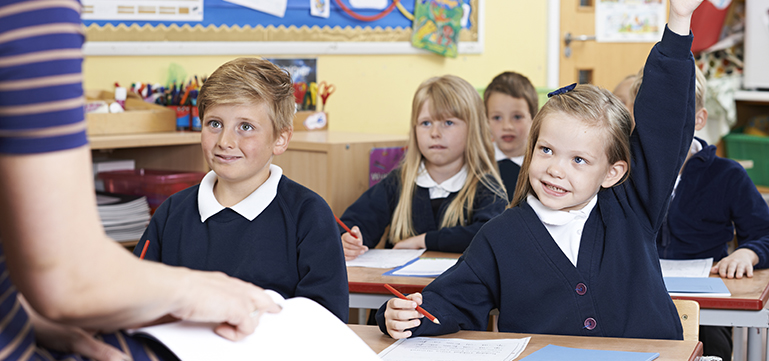Making families partners in learning

Information about the school
Brackla Primary School is in Bridgend. There are currently 309 pupils on roll aged 3 to 11. The school has 10 classes in total, including five mixed-age classes.
Around 21%, of pupils are eligible for free school meals, which is in line with the national average (20%). The school identifies about 24% of pupils as having additional learning needs, which is again in line with the national average (25%). Most pupils are of white British ethnicity. A very few pupils speak Welsh at home. A very few pupils are learning English as an additional language.
Context and background to sector-leading practice
In 2012, Brackla Primary School worked with the local cluster of schools to employ a Family Engagement Officer (FEO). Initially, this was successful in developing opportunities for families to support their children. However, as the FEO worked in six schools, the time spent in each school was limited. Therefore, in 2014, the school released a cover supervisor for one day per week to help develop the role further. This meant that the school could introduce some additional programmes such as family values, family learning, outdoor learning and play, international cafes and Welsh and Play. In 2015, Brackla appointed its own part-time FEO further to enhance and extend the effective partnership between families, with a specific focus on helping parents support and improve their children’s learning further.
Description of nature of strategy or activity
F@B: Families at Brackla
Part of the school’s vision is to foster partnerships, where families (parents, carers, grandparents, older siblings) are key partners in the learning process. In September 2015, following consultations with various stakeholders, the school re- launched Families at Brackla (F@B). Leaders designed a new programme of events based on mutual priorities. These included refreshing many of the existing programmes, including Family Learning, Reading Café, Literacy and Play, and Numeracy and Play, and introducing new initiatives such as ‘Chill and Chat’, daily ‘drop in’ sessions, ‘Stay and Play’ for nurture pupils and ‘Family Active Zone’.
A variety of teaching and support staff are involved in the planning and delivery of the interventions and programmes on offer, all of whom have received specific training. Workshops for families have included focusing on the specific skills of teaching reading and mental calculations. The school developed links with the local college to offer basic and advanced literacy and numeracy classes for families.
Leaders established a Family Forum with the aim of involving family members in influencing the strategic direction of the school. They meet half-termly focusing on topics such as the School Development Plan, specific approaches to teaching literacy and numeracy and National testing. This has resulted in improved discussions between home and school and a significant increase in attendance at workshops on offer.
The FEO also supports targeted families with low pupil attendance. This involves drop in sessions, discussions on the phone and face-to-face, and working closely with the headteacher and the Education Welfare Service.
Leaders strongly believe that effective communication with families is essential in order to build positive relationships. Staff use a wide range of tools to communicate with families, provide them with information, and recognise and celebrate the life and work of the school. These include weekly bulletins, F@B monthly newsletters, Twitter, The Life Channel, internal digital signage, external notice boards, school website, texts and emails.
What impact has this work had on provision and learners’ standards?
- Family engagement at Brackla Primary is now a fully embedded whole school strategy with nearly all stakeholders understanding and supporting our school vision very effectively. This has led to improved standards across the school. For example, nearly all pupils that attended literacy and numeracy based programmes with a family member, made better than expected progress in literacy and numeracy.
- Of the targeted families, 82.3% of pupils have increased their attendance levels.
- Highly successful links with the local college have enabled parents to attend free courses for families in literacy, numeracy, Welsh and sign language. Most of these have led to accreditations and employment.
- Evaluations from families have shown that they feel more prepared to support their children at home particularly with reading and homework.
- Effective communication between home and school has led to increased attendance at cookery workshops, golf lessons and whole school events such as open afternoons.
How have you shared your good practice?
The school set up a Family Engagement Forum in October 2015, which allows FEOs to meet and share best practice across the authority. Currently there are 11 members that meet half-termly. In addition, the school has been included on an authority’s best practice DVD and staff have presented at an Investors in Families conference. Colleagues from other schools and organisations such as Communities First and Action for Children have also visited the school.
Useful links
Other resources from this provider

Active and experiential learning - Effective foundation phase practice in delivering literacy and numeracy in Year 1 and Year 2
pdf, 4.57 MB Added 14/12/2017

A review of healthy relationships education
pdf, 1.15 MB Added 23/06/2017